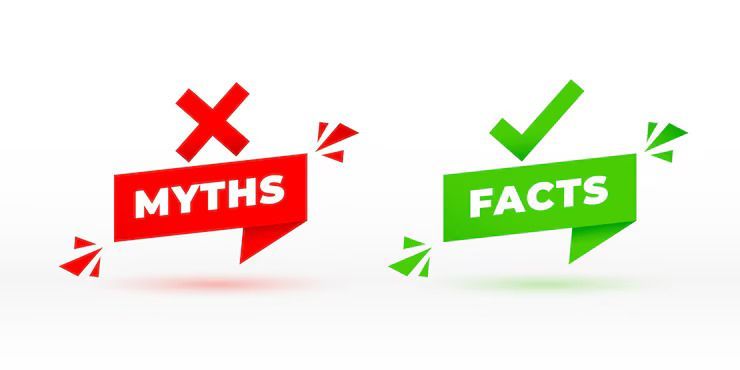The 6 Most Common Myths About Employee Ownership
Employee ownership through an Employee Stock Ownership Plan (ESOP) offers business owners a powerful exit strategy and succession planning tool. Yet despite their 40+ year history and proven track record, ESOPs remain widely misunderstood.
At ESOP Consulting Group, we regularly meet business owners who are intrigued by employee ownership but hesitate because of misconceptions they've heard. Let's clear up the six most common myths about ESOPs that might be holding you back from exploring this valuable option.
Myth #1: "I'll have to give up control of my company immediately"
Many business owners assume implementing an ESOP means handing over the keys to their company right away. This simply isn't true.
An ESOP is remarkably flexible when it comes to the timing and degree of your transition. You can sell as little as 30% of your company initially and remain the majority owner. Many business owners continue to serve as CEO or board chair for years after establishing an ESOP. The transition timeline is entirely customizable to your goals.
You decide how quickly or gradually to transition leadership and ownership. Some owners sell a minority stake initially, then increase the ESOP's ownership over 5-10 years. Others sell 100% immediately but stay involved in management. The choice is yours.
Think of an ESOP as creating options rather than limiting them. It provides a framework for eventual succession while allowing you to maintain meaningful control during the transition period you design.
Myth #2: "My employees will need to buy shares with their own money"
Unlike direct stock purchase plans, employees don't pay out of their own pockets to acquire shares in an ESOP.
Here's how it actually works: The company establishes a trust (the ESOP) that purchases shares from the selling owner(s). This purchase is typically funded through bank financing, seller financing, or company cash – not employee contributions.
Employees receive shares through annual allocations as part of their benefits package. These allocations are based on relative compensation or a more equal formula determined by the company. The shares are held in trust until an employee leaves or retires, at which point the company buys back their shares at fair market value.
For employees, this creates a retirement benefit that grows with the company's success without requiring any personal investment on their part. They gain ownership without opening their wallets.
Myth #3: "Employees will make all the business decisions"
Another common misconception is that implementing an ESOP means employees will suddenly be involved in day-to-day management decisions or strategic planning.
The reality is that an ESOP doesn't change your company's management structure. The board of directors still appoints the executive team, which continues to make operational decisions. The ESOP trustee (who represents employee-owners) typically votes on major issues like mergers or board elections, but doesn't get involved in business operations.
What does change is the opportunity to create a more participative culture where employees think and act like owners. Research shows this "ownership mentality" leads to improved company performance. But it doesn't mean employees start dictating business strategy or making management decisions beyond their roles.
Myth #4: "ESOPs only work for very large companies"
Many business owners assume ESOPs are only viable for major corporations with hundreds or thousands of employees. In reality, ESOPs can work well for mid-sized and smaller companies too.
While there's no absolute minimum, ESOPs typically become practical for companies with at least 15-20 employees and annual revenues above $2 million. The key factor isn't size but rather consistent profitability, as the company needs to generate enough cash flow to fund the ESOP benefits.
Some of the most successful ESOPs operate in companies with 50-100 employees. At this size, the benefits of employee ownership – increased engagement, higher retention, tax advantages – often create significant competitive advantages.
Myth #5: "I'll receive less money than through a traditional sale"
Business owners naturally worry they might be leaving money on the table by choosing an ESOP over selling to a competitor or private equity firm.
The truth is that with an ESOP, you receive fair market value for your business based on an independent appraisal – the same standard used in other types of sales. While the initial price might occasionally be slightly lower than a strategic buyer's premium offer, the after-tax proceeds from an ESOP sale often exceed what you'd pocket from a traditional sale.
This is because of the substantial tax benefits available with ESOPs. Selling owners can defer or potentially eliminate capital gains taxes through a 1042 rollover. Additionally, the company itself receives tax benefits that strengthen its ability to complete the purchase successfully.
When you factor in these tax advantages and the ability to sell partial interests over time, many owners actually walk away with more total wealth from an ESOP than they would from other exit options.
Myth #6: "ESOPs are too complicated and expensive to set up"
It's true that establishing an ESOP involves specialized expertise and careful planning. However, with the right advisors guiding the process, it's no more daunting than other succession strategies like selling to a third party.
The cost of establishing an ESOP typically ranges from $80,000 to $150,000 depending on company size and transaction complexity. While this represents a significant investment, it's comparable to the costs associated with other exit strategies when you consider the legal, accounting, and investment banking fees involved in any ownership transition.
More importantly, the tax benefits often offset these costs many times over in just the first year. The ongoing administration costs are also manageable – typically similar to what you'd spend on a well-designed 401(k) plan plus an annual business valuation.
The Reality of Employee Ownership
Beyond these myths lies the reality that over 6,500 U.S. companies have successfully implemented ESOPs, covering approximately 14 million employee-owners. These companies span virtually every industry and size category.
Research consistently shows ESOP companies outperform their non-ESOP counterparts in productivity, profitability, and employee retention. They're also more resilient during economic downturns, with ESOP companies being 4-5 times less likely to lay off employees during recessions.
Rather than being too complicated, too expensive, or too limiting, ESOPs offer a flexible succession tool that can be customized to meet your specific goals – whether that's maximizing after-tax proceeds, preserving company legacy, rewarding employees, or creating a gradual transition plan.
The key is working with experienced advisors who can help you determine if an ESOP makes sense for your specific situation and guide you through the process if it does.
Want to learn more about how an ESOP might work for your company? Contact ESOP Consulting Group for a no-obligation consultation to explore whether employee ownership could be the right succession strategy for your business.
Share this article





